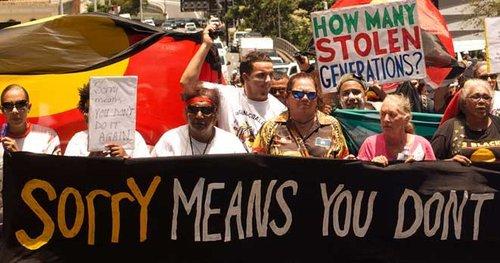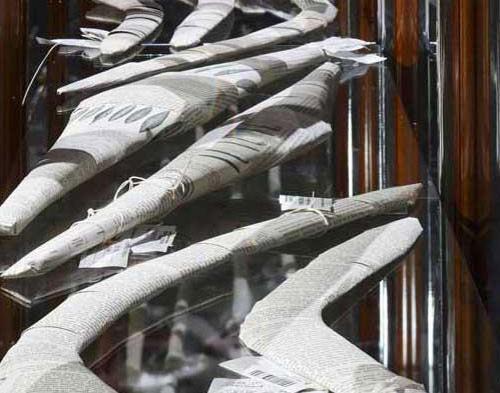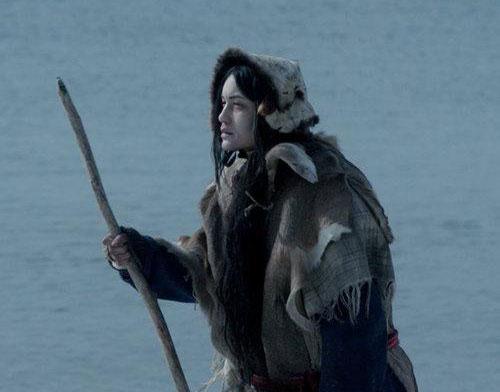.jpg)
Aboriginal and Torres Strait Islander people have an 80,000-year tradition of storytelling. This storytelling has a non‑linear way of not just telling story, but enhancing the message through an oral story, dance, song or painting. This way of implanting old storytelling techniques has seen our communities enlivened by the new technologies of firstly film and now also the digital space. Some of these innovative storytellers are also now pushing their breath into the installation space for film and artworks to further demonstrate how old storytelling techniques are being enhanced and transformed.
In the Australian landscape we have seen the early attempts of a biased lens whether in the writing of the early colonisers or the cinema world, often seeing Indigenous as the “dying culture” that needs to be captured, one that is stagnant and not evolving. But when Aboriginal and Torres Strait Islander people have been given back the opportunity to tell their stories, in some places they are stripping bare the colonial constraints placed around their works and allowing the lens to be shaped or skewed differently. In this way they are “Indigenising” the space, understanding that the non‑linear DNA of old storytelling techniques can be seen as an advantage.
The new works being created both nationally and internationally have always had critical acclaim but it is also gratifying that our own communities are now able to engage in the digital space and see for themselves the old techniques of storytelling being captured again across the various platforms. For example, you can witness the moving with ease between cultural practices of weaving, to weaving discarded materials or objects from the past into a useful tool to be presented in both the traditional sense in galleries, but also out on country and on film and in the online space, creating a sense of connection and learning and teaching back to the product being created.
Opening up the perspectives and assumptions placed on our communities to create a dialogue with the lens shows the many additional layers being added into the stories, making for rich content that is being acclaimed and admired around the world. Not only are some of our filmmakers, artists and storytellers reimagining the stories with a lens that is uniquely Indigenous, they are helping to find the new protocols to be sorted through, the lessons and the research into not just our own knowledge spaces, but also into archival worlds that we often found hard to reach as databases of the old materials of colonial settlement.
Much of our peoples’ information is still held in the basements of libraries and museums. As the cobwebs are removed and we can reach further into the digital space of the archive, we are challenged about how to take care and establish appropriate processes and protocols. These storytellers are helping to show that not only is our culture one that is still thriving, it is in many cases reviving in the digital world. Our communities are facing statistics that haven’t changed much since 1967 and from the political spectrum of the “Close the Gap” it sometimes feels like that the gap is getting larger.
For our people, families and communities, just trying to survive day to day and seeing ourselves being portrayed as a statistic or news grab, the “story” and the ways of “telling the story” are helping to create a new narrative. Our artists are using differing techniques to open up engagement into the stories that need to be heard and healed, whether through injustices placed in with art or art being created with injustices in mind. These new ways of creating platforms for the voices of many to be heard in the one central space allows for a healthy conversation around the truths of the story, while appreciating the creative work.

We organically thought this edition would be about film, and the celebration of the wave of cinema in the past 25 years since the founding of the Indigenous Branch at Screen Australia and in some ways all of the articles written have helped to show the shape of that industry riding on the wave of our Australian identity being redefined by the diversity of our Aboriginal and Torres Strait Islander filmmakers on screen, but what we found also expanded this recognition to the storytellers of the digital space. Using film, music, dance, performace, visual art and the archive as research tools is helping to show the many facets and mechanisms through which audiences can engage in this creative space and participate in switching the lens.
As Uncle Bruce Pascoe writes: “What we have learnt on going on this journey with the storytellers, is that our Indigenous cultures are not dying, our culture did not stop when the tall ships rolled in, they have not been stagnate in time, and the storytellers of today are using all forms of technology to breathe our cultures to an audience with innovation and cultural strength.” In that spirit, we hope you enjoy this edition.










